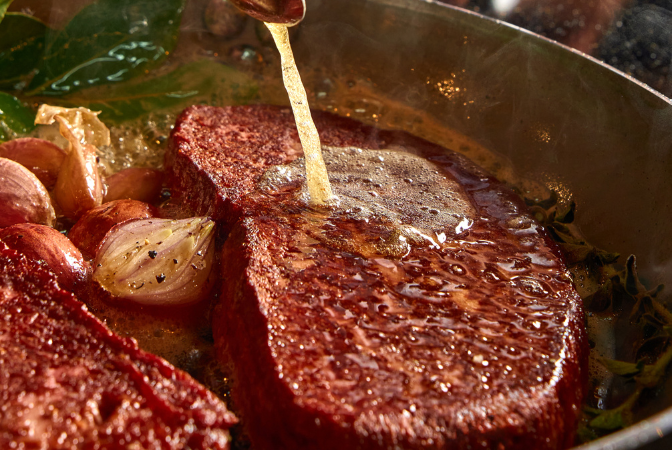
- All Instrument Types
- Indices
- Equities
- ETFs
- Funds
- Commodities
- Currencies
- Crypto
- Bonds
- Certificates
Please try another search

Growing Popularity of Flexitarian Diets Creates Strong Demand For 3D Printed Meat Alternatives
Steakholder Foods’ 3D printers and premixes recreate the flavors and textures of meat and seafood using plant-based ingredients

The number of people choosing to eat plant-based diets has been growing, with 22% of the global population, or more than 1.5 billion individuals, considering themselves vegetarian or vegan. Many people are open to shifting to a plant-based diet or at least reducing their meat intake, as shown by the increasing participation in Veganuary, which encourages people to eat only vegan food for the month of January. From around 1,200 people in 2015, the number grew rapidly each year, reaching over 706,000 in 2023.
There are various reasons why people choose a vegetarian or vegan diet, such as health, religion, or animal welfare. Because the production of animal-based foods is responsible for more greenhouse gas emissions than plant-based foods, people believe that a plant-based diet is healthier for the planet.
Despite this, meat has been an intrinsic part of humanity’s diet since time immemorial and has played a central part in many cultures. This has resulted in heavy investment in meat alternatives, with the global market expected to grow by 42.4% between 2023 and 2030, exceeding $200 billion by the end of the decade.
However, not all meat alternatives are able to replicate the unique textures and flavors provided by meat dishes.
Enter Steakholder Foods, a company that uses 3D printing technology to recreate meat and seafood using plant-based ingredients. By creating products that rival traditional meat in taste, texture, and nutrition and making them more accessible, Steakholder Foods seeks to revolutionize how food is produced and consumed. To date, the company has raised a total of $72 million in investment, with 16 patent applications for the intellectual property it has generated.
Steakholder Foods’ innovation centers on two industrial-grade 3D printing machines, with the difference lying in how they structure the products. The HD144 printer uses Drop Location in Space (DLS™) technology to mimic fish and seafood by precisely placing plant-based ingredients in specific patterns and layers. Meanwhile, the MX200 printer combines two distinct materials with Fused Paste Layering (FPL™), replicating the texture of meat and the natural interplay of muscle and fat.
Both these printers can produce almost half a ton per hour and can be quickly reconfigured by manufacturers to produce different product variants. For example, the meat printer can create marbled steak in the first half of the day and filet mignon in the latter half, just by switching out the premix being used and the model that is being printed.
Steakholder Foods has also developed various ready-to-use premixes for various meat alternative products, functioning as the “ink” in the 3D printing process. There are currently two variants, namely: beef steak, white fish. More variants, including chicken, shrimp, eel, and salmon, as well as a variety of beef cuts are coming soon.

All of Steakholder Foods’ premixes are 100% vegan and plant-based, promoting sustainability and ethical consumption. The main ingredients are soy and pea protein, combined with natural fats and selected flavorings to recreate the texture and mouthfeel of the original meat product.
As a business-to-business venture, Steakholder Foods has strong potential for recurring revenues through its supply of premixes. With the growing trend of consumers being more health-conscious and mindful of their diets, there is a proven market fit. The company has signed agreements with several food producers in its home market, and is well-positioned to serve global clients, bringing its innovative 3D printing technology to a wider market.
“Our innovative 3D printing technology and natural premixes ensure that our clients are able to replicate the unique textures and flavors of meat, further accelerating the shift towards plant-based food,” says Arik Kaufman, CEO of Steakholder Foods. “We are excited about the future possibilities. The strategic partnerships and technological advancements we have achieved lay a solid foundation for our future growth and commercialization efforts.”




